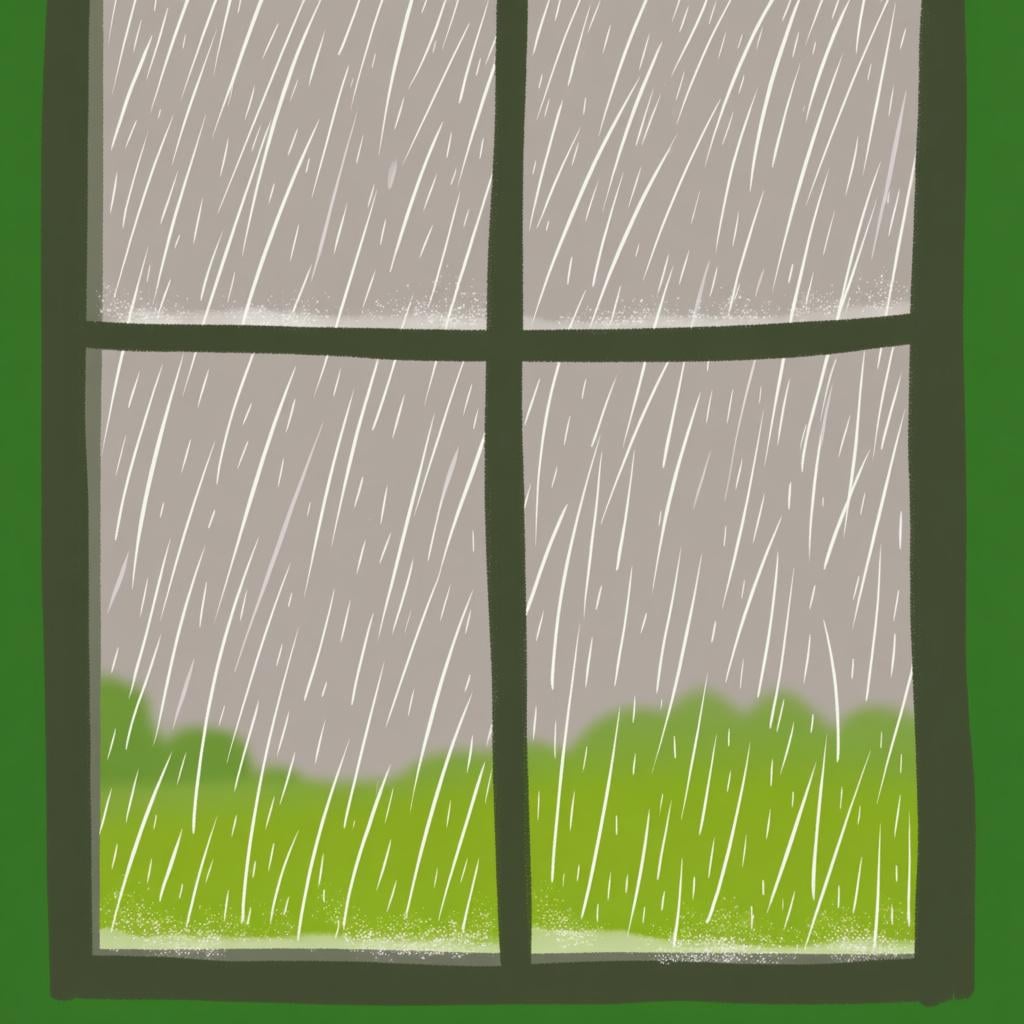sigue
/see-geh/
he/she follows

Sigue (He/she follows): The man follows the woman down the path.
sigue(Verb)
he/she follows
?as in, to walk or go behind someone
,you follow
?formal 'usted' form
it follows
?referring to an animal or object
📝 In Action
El perro siempre sigue a su dueño al parque.
A1The dog always follows its owner to the park.
Usted sigue al guía, por favor.
A2You follow the guide, please.
💡 Grammar Points
The 'e' to 'i' Vowel Change
The verb 'seguir' is a bit tricky. In many forms, like 'sigo' (I follow) and 'sigue' (he/she follows), the 'e' in the stem changes to an 'i'. But notice it doesn't change for 'nosotros' (seguimos)!

Sigue lloviendo (It keeps raining): The image shows the rain continuing relentlessly.
sigue(Verb)
he/she continues
?as in, to not stop
,he/she keeps on
?often followed by an '-ing' verb in English
it continues
?referring to a situation or event
📝 In Action
Si sigue lloviendo, no podemos salir.
A2If it keeps raining, we can't go out.
Ella sigue estudiando español todos los días.
A2She keeps on studying Spanish every day.
El concierto sigue, a pesar del problema técnico.
B1The concert continues, despite the technical problem.
💡 Grammar Points
Saying 'Keep on doing something'
A super useful pattern is 'seguir' + a verb ending in '-ando' or '-iendo'. For example, 'sigue hablando' means 'he keeps on talking'. It's the Spanish way of saying an action is continuing.
❌ Common Pitfalls
Using the wrong verb form after 'sigue'
Mistake: "Él sigue estudiar mucho."
Correction: Él sigue estudiando mucho. After 'seguir' (to keep on), the next verb almost always ends in '-ando' or '-iendo'.

Sigue abierta (Is still open): The shop remains open late into the evening.
sigue(Verb)
is still
?describing a continuing state or condition
,remains
?e.g., The door remains open.
📝 In Action
La tienda sigue abierta hasta las diez.
B1The store is still open until ten.
¿Tu amigo sigue enojado conmigo?
B1Is your friend still mad at me?
El problema sigue sin solución.
B2The problem remains without a solution.
💡 Grammar Points
Saying 'Still' in Spanish
While you can use 'todavía' (still), it's very natural to use 'seguir' + an adjective or description. 'Él está enfermo' means 'He is sick'. 'Él sigue enfermo' means 'He is still sick'.
⭐ Usage Tips
A more natural 'still'
Instead of saying 'Todavía está lloviendo', try 'Sigue lloviendo'. It often sounds more fluid and natural to native speakers for ongoing actions or states.

¡Sigue! (Continue!): The image gives a clear command to keep going straight ahead.
sigue(Verb (Command Form))
Follow!
?informal 'tú' command
,Continue!
?informal 'tú' command
Keep going!
?informal 'tú' command
📝 In Action
Para llegar al museo, sigue todo recto.
A2To get to the museum, continue straight ahead.
No te rindas, ¡sigue intentándolo!
B1Don't give up, keep trying!
Sigue las instrucciones con cuidado.
A2Follow the instructions carefully.
💡 Grammar Points
Giving Commands with 'tú'
'Sigue' is the command form you use with friends or people you call 'tú'. It's used to tell someone directly to do something, like giving directions.
❌ Common Pitfalls
Confusing with other forms
Mistake: "Using 'sigues' as a command: 'Sigues recto'."
Correction: Use 'sigue recto'. For commands you give to 'tú', you often use the same form as the 'él/ella' present tense. So, 'él sigue' (he follows) and 'sigue' (Follow!) look the same.
🔄 Conjugations
indicative
present
imperfect
preterite
subjunctive
present
imperfect
✏️ Quick Practice
💡 Quick Quiz: sigue
Question 1 of 3
Which sentence means 'Keep walking!'?
📚 More Resources
Frequently Asked Questions
Why does 'sigue' look the same for 'he follows' and the command 'Follow!'?
It's a pattern in Spanish! For many verbs, the affirmative command you give to 'tú' (the informal 'you') is the same as the 'él/ella/usted' form in the present tense. Context is key: if you're talking *about* him, it means 'he follows'. If you're talking *to* your friend and telling them what to do, it means 'Follow!'.
Can I say 'todavía sigue' for 'still continues'?
You can, but it's a bit redundant, like saying 'still keeps on'. Both 'sigue' and 'todavía' mean 'still' in this context. Usually, you just need one. 'Sigue lloviendo' or 'Todavía llueve' both mean 'It's still raining'. Using 'sigue' is often preferred for ongoing actions.
What's the difference between 'sigue' (from seguir) and 'siga'?
'Sigue' is either the present tense for 'él/ella/usted' (he/she/you follow) or the informal command for 'tú' (Follow!). 'Siga' is used for formal commands ('usted') and for a special verb form called the subjunctive, used after phrases of doubt, desire, or opinion (e.g., 'Espero que él siga las reglas' - I hope that he follows the rules).